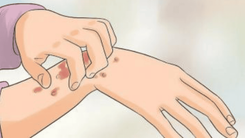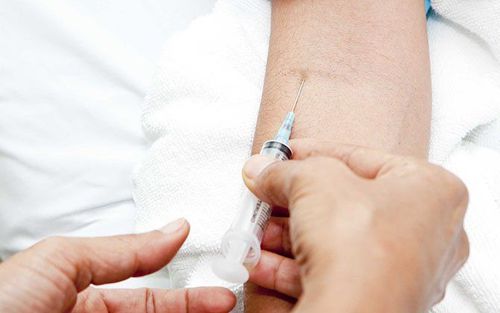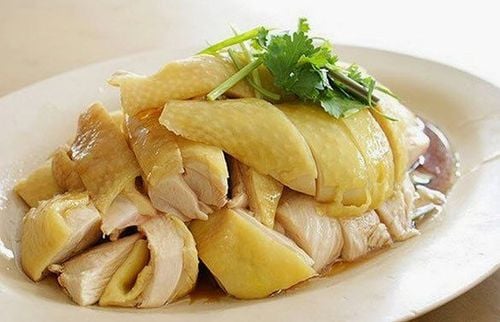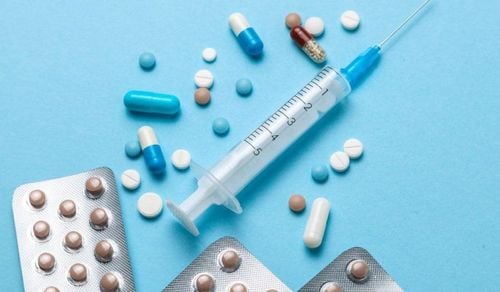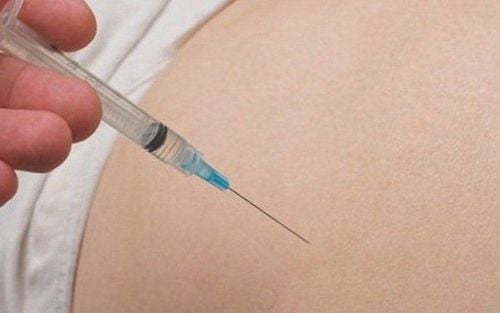This article was professionally consulted by Dr. Phan Ngoc Toan (MSc, MD) - Department of Emergency & Resuscitation - Vinmec Da Nang International Hospital.
Intramuscular injection is a basic and common technique to administer medication into the body, and it also works faster than oral or subcutaneous injection. However, complications often occur when performing this technique.
1. Intramuscular Injection Technique
The intramuscular injection technique involves using a syringe to deliver medication deep into the muscle layer, allowing the drug to be absorbed into the bloodstream quickly. Intramuscular injection is one of the four basic injection routes, which include intravenous injection, intramuscular injection, subcutaneous injection, and intradermal injection, to deliver medication into the body effectively and provide rapid effects.
The rate at which the drug is absorbed into the blood differs between the injection routes. Specifically, intravenous injection is the fastest, followed by intramuscular injection, subcutaneous injection, and finally intradermal injection. Therefore, using the intramuscular injection technique to administer medication to patients will lead to faster effects.
The intramuscular injection technique is indicated in cases where the medication solutions are isotonic (isotonic solutions are those with a solute concentration equal to that of the intracellular environment, meaning that the concentration of substances diffusing in and out of the cell is equal, thus the cell does not shrink or burst). Indications for intramuscular injection include:
Oil-based solutions.
Medications that cannot be administered intravenously.
Solutions that dissolve slowly and cause pain.
Most subcutaneous injectable drugs can be administered intramuscularly, except for caffeine.
Medications that are likely to cause irritation or have a slow effect when administered via the subcutaneous route.
Intramuscular injection technique is contraindicated for medications that can cause muscle tissue necrosis, such as calcium chloride, ouabain, etc.
Based on the injection site, intramuscular injections are divided into two main categories:
- Superficial Intramuscular Injection: Injected at the following locations:
- Arm:
- Deltoid muscle
- Triceps brachii
- Leg: Quadriceps muscle
Deep Intramuscular Injection: Injected in the gluteal muscle region.
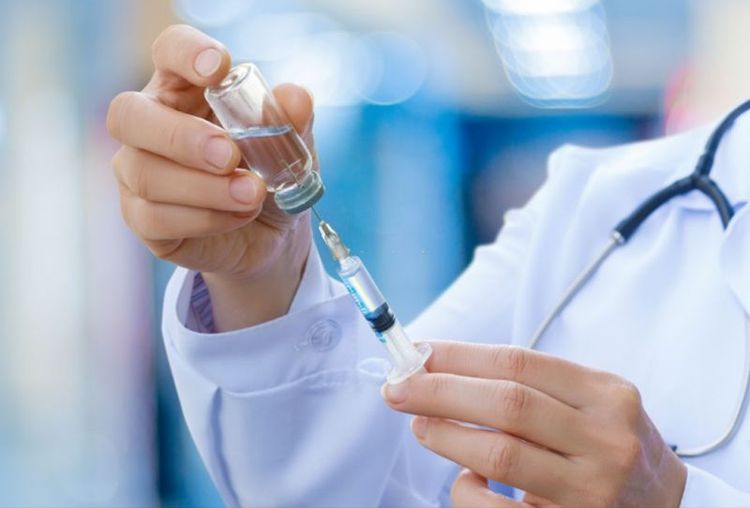
2. Possible Complications After Intramuscular Injections
After an intramuscular injection, patients may experience some discomfort, but most of them are normal signs. However, if you experience any of the following symptoms, medical attention is required:
- Tingling or numbness.
- Prolonged bleeding.
- Severe pain at the injection site.
- Fatigue, high fever, and headaches.
- Swelling, redness, or warmth at the injection site.
- Discharge from the injection site.
- Signs of an allergic reaction, such as difficulty breathing or face swelling.
The possible complications that can occur with intramuscular injections include:
Broken Needle or Bent Needle:
Broken Needle: This complication occurs if the patient struggles during the injection. To prevent this, ensure the patient is well-secured and does not move during the injection.
Bent Needle: This is caused by an error in technique by the nurse during the injection.
To prevent this, do not insert the needle completely into the skin, so if the needle breaks, it can still be removed.
Injury to the Sciatic Nerve:
- This is caused by incorrect identification of the injection site or an improper needle angle.
- Prevention: Ensure the injection site is correctly identified, and the needle is inserted at a 90-degree angle.
Vascular occlusion:
- This is caused by injecting oil-based or emulsified medications into the bloodstream.
- Prevention: After inserting the needle, before administering the medication, pull back the plunger to check for blood. If there is blood, remove the needle and inject it at another location. Only inject if there is no blood.

Infectious abscess, aseptic abscess:
- The cause of an infectious abscess is failure to ensure aseptic principles during injection.
- The cause of aseptic abscess is due to insoluble drugs such as Quinine, Hydrocortisone and difficult-to-dissolve oil-based drugs, which will cause localized abscess formation.
- Detection: Swelling, heat, redness, and pain occur at the injection site.
- Management: Depending on the extent of the damage, you can apply hot compresses or incise and drain the abscess when necessary.
- Prevention: It is essential to ensure aseptic principles when giving injections.
Tissue Necrosis:
- Cause: This occurs due to the injection of substances that cause tissue necrosis, such as drugs that are contraindicated for intramuscular injection, like calcium chloride.
- Detection: The injection site will feel hot, red, and painful. Initially, it will be hard, and later it will soften and resemble an abscess.
- Management: If detected early, local anesthesia with Novocain should be applied. Initially, you can apply a warm compress. If necrosis has already occurred, use a thin bandage to prevent further infection. If the necrotic area is large, incision and drainage may be necessary.
- Prevention: Carefully check the type of medication before injection to ensure it is not contraindicated for intramuscular injection.
Anaphylactic Shock:
- Cause: This occurs due to the body’s reaction to the medication.
- Detection: Symptoms of anaphylactic shock include:
- Patients experience unusual sensations such as panic, restlessness, anxiety, fear, etc.
- Patients may have itching, hives, erythema, or Quincke's edema (visible swelling of the eyes, lips, and face).
- Upon examination, the pulse is rapid, weak, and difficult to detect, and blood pressure is low or undetectable.
- Patients may experience abdominal cramps and involuntary urination.
- Patients may experience dizziness, headache, lightheadedness, restlessness, convulsions, agitation, or even coma.
- Management: Immediate treatment should be administered according to the anaphylactic shock protocol provided by the Ministry of Health.
- Prevention: Before injecting, carefully check the patient’s medical history, especially for allergies. For drugs that are prone to causing allergic reactions, such as Penicillin, anticonvulsants, Sulfonamides, Insulin (especially animal-derived Insulin), and local anesthetics (like Novocain), it is important to perform a test dose before administration.
Intramuscular injection is one of the basic injection techniques, commonly used in the treatment of various diseases and also in vaccination. This is a technique that requires the practitioner to be trained. During the procedure, it is important to ensure aseptic conditions, check and carry out the correct technique. Otherwise, complications may easily occur.
To arrange an appointment, please call … or make your reservation directly HERE. You may also download the MyVinmec app to schedule appointments faster and manage your reservations more conveniently.



